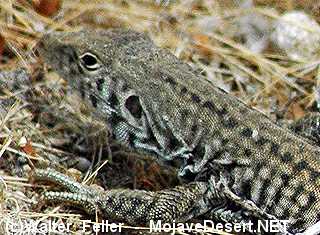Introduction:
The Western whiptail lizard (Aspidoscelis tigris) inhabits arid regions across North and Central America. These lizards capture scientists and nature enthusiasts with their unique physical characteristics and intriguing behavioral traits. We will explore the world of the whiptail lizard, its habitat, physical attributes, diet, reproduction, and the remarkable adaptations that allow it to thrive in harsh desert environments.
Habitat and Distribution:
Whiptail lizards prefer to make their homes in arid, desert regions characterized by sandy or rocky terrain. They can be found in various parts of North and Central America, including the southwestern United States, Mexico, and parts of Central America. These lizards have adapted to survive in such harsh environments, where extreme temperatures and limited water sources pose constant challenges.
Physical Attributes:
One of the most distinctive features of the whiptail lizard is its long, slender body. This can range in size from a few inches to over a foot in length. Their tails, accounting for about two-thirds of their body length, are whip-like and highly flexible, providing exceptional agility and the ability to maneuver through their surroundings swiftly. Their bodies are covered in scales that protect them from the scorching desert sun and potential predators.
Diet:
Whiptail lizards are primarily insectivores, feeding on a variety of small invertebrates such as spiders, ants, beetles, and grasshoppers. Their keen eyesight and lightning-fast reflexes make them efficient hunters, allowing them to spot and capture their prey precisely.
Reproduction and Social Behavior:
The whiptail lizard exhibits unique reproductive behavior. Most species are parthenogenetic, which means they reproduce asexually without the need for males. Females are capable of laying unfertilized eggs, which develop into exact genetic replicas of their mothers. This remarkable adaptation allows populations to rapidly expand, as a single female can produce multiple clutches of eggs throughout the year. However, some species do engage in sexual reproduction, with males and females mating to produce offspring.
In terms of social behavior, whiptail lizards are typically solitary creatures with limited interactions with other members of their species. They establish territories and defend them fiercely, especially during the mating season. Males engage in courtship rituals, such as head-bobbing and tail-waving, to attract females.
Adaptations for Desert Life:
Whiptail lizards have developed several adaptations to survive in the harsh desert environment. Their light-colored scales help reflect sunlight, reducing heat absorption. They also possess specialized nasal passages that allow them to extract moisture from the air they breathe. Additionally, their ability to regulate their body temperature enables them to withstand extreme temperature fluctuations.
Conclusion:
The whiptail lizard is a fascinating reptile that has conquered the challenges of desert life through its unique physical attributes and behavioral adaptations. From its slender body and whip-like tail to its remarkable reproductive strategies and ability to thrive in arid environments, this reptile is a testament to the wonders of evolution. By understanding and appreciating the whiptail lizard, we gain insight into the remarkable diversity of life on our planet and how organisms adapt to their environments.
Walter Feller – 2023
